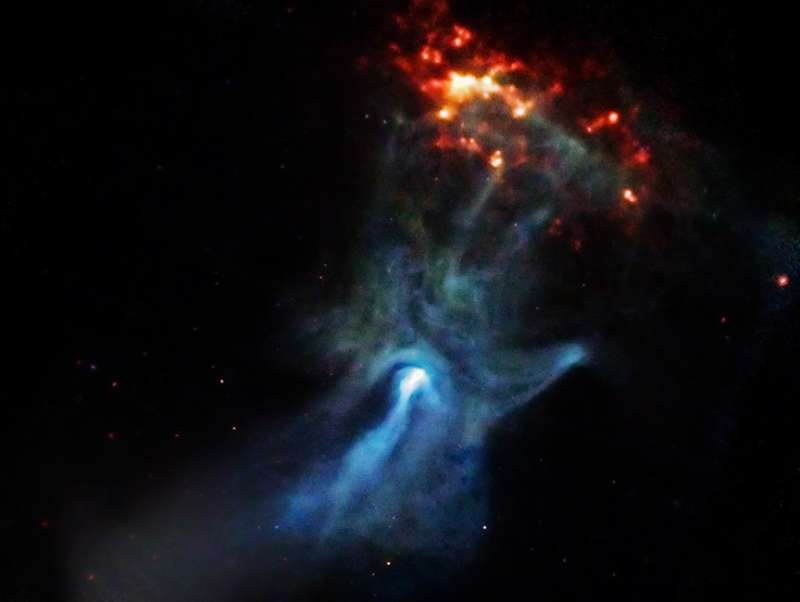
|
Explanation: As far as pulsars go, PSR B1509-58 appears young. Light from the supernova explosion that gave birth to it would have first reached Earth some 1,700 years ago. The magnetized, 20 kilometer-diameter neutron star spins 7 times per second, a cosmic dynamo that powers a wind of charged particles. The energetic wind creates the surrounding nebula's X-ray glow in this tantalizing image from the Chandra X-ray Observatory. Low energy X-rays are in red, medium energies in green, and high energies in blue. The pulsar itself is in the bright central region. Remarkably, the nebula's tantalizing, complicated structure resembles a hand. PSR B1509-58 is about 17,000 light-years away in the southern constellation Circinus. At that distance the Chandra image spans 100 light-years.
|
January February March April May June July August September October November December |
| |||||||||||||||||||||||||||||||||||||||||||||||||||||||
NASA Web Site Statements, Warnings, and Disclaimers
NASA Official: Jay Norris. Specific rights apply.
A service of: LHEA at NASA / GSFC
& Michigan Tech. U.
Based on Astronomy Picture
Of the Day
Publications with keywords: pulsar - neutron star
Publications with words: pulsar - neutron star
See also:
- APOD: 2025 September 3 Á Cir X1: Jets in the Africa Nebula
- APOD: 2025 August 24 Á The Spinning Pulsar of the Crab Nebula
- Supernova Remnant CTA 1
- APOD: 2024 July 23 Á The Crab Nebula from Visible to X Ray
- Supernova Cannon Expels Pulsar J0002
- The Spinning Pulsar of the Crab Nebula
- GW200115: Simulation of a Black Hole Merging with a Neutron Star
